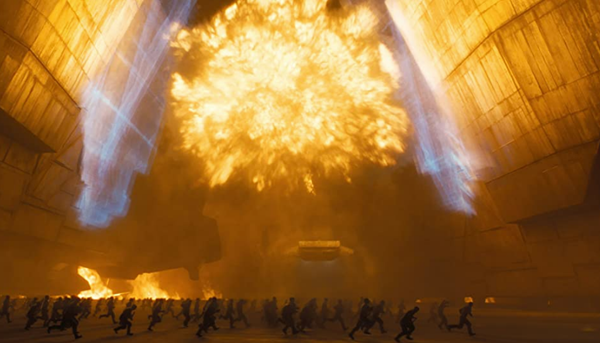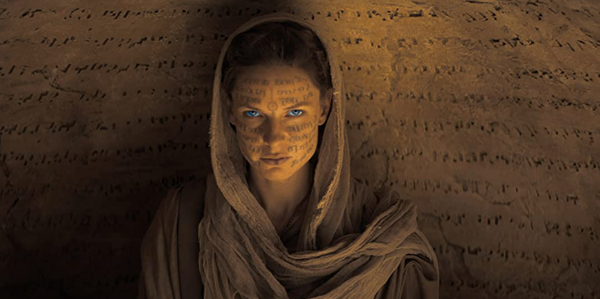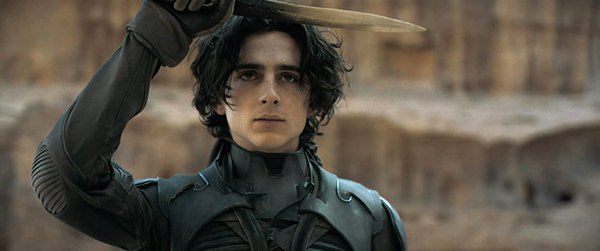
The long-awaited sci-fi epic Dune has finally arrived, like an impossibly large and ornate space-faring vessel, a floating behemoth slowly descending toward the surface of an alien terrain.
What could such a wonder hold inside its gargantuan belly? What strange and confounding delights could this otherworldly marvel of technology reveal? The ship lands. A ramp descends, a door hisses open, and out steps . . . a human in odd clothes.
Such is Dune, the long-delayed adaptation of a beloved novel few have read, a sometimes awe-inspiring feat of cinematic, computo-graphic achievement with an all-too-familiar story inside. The oversimplified and insulting shorthand is Game of Thrones meets Star Wars. There’s the political intrigue of the Emperor (no, not that one) moving the houses of Harkonnen and Atreides like galactic pawns off of, and on to, respectively, the giant worm-ridden sand planet Arrakis. And then there’s the hero’s journey of young Paul Atreides (Chalamet), heir to house Atreides, who has been taught by his mother the seemingly magical powers of her all-women witches’ society, the Bene Gesserit. Though the names and terms may be unfamiliar to some, the themes certainly are not.

Beneath it all is the Spice, a hallucinogenic substance that sustains the Arrakis natives, the Fremen, and is greedily mined by the Empire as a necessary component for interstellar travel. The Spice also provides the lone bit of color in Villeneuve’s dark and drab vision, as its use presents itself by turning the whites of one’s eyes a vibrant blue. Working for the first time with cinematographer Greig Fraser, whose few high-profile credits prove his sandy space adventure bona fides, Villeneuve tells part one of his tale (the rare time when splitting one book into two movies feels apt) in the muted tones of his earlier films Sicario or Arrival, rather than the full color palette of Blade Runner 2049. As a stylistic choice, it works on Arrakis, but the lack of color variety on other planets and locations makes them almost indistinguishable from one another, especially when both the hero and the villains share similar goth aesthetics (Edward Scissorhands and a Nine Inch Nails video, respectively).

While the color palette can become fatiguing, so too can some of the performances. No one is bad per se, just one-note. Chalamet gives Ryan Gosling a run for his money in the brooding/glowering department, but also adds talking through clenched teeth to mix it up. Likewise, nearly the entire cast, save Jason Momoa as the bafflingly named Duncan Idaho (it was cringeworthy in the novel too), gives the same self-serious, low-register vocal performance that may feel earned and appropriate to superfans, but comes across as self-important to the uninitiated.
What this adds up to is the ultimate version of a sci-fi mega-classic for some, and for others a well-trodden space opera given the auteur treatment. Both responses seem about as good as can be expected—short a Game of Thrones-type explosion into the zeitgeist—from what is basically an adaptation of the proto-Star Wars. The novel that made ubiquitous a thousand tropes that are often wrongly attributed to George Lucas, was also made virtually irrelevant by Lucas and his ilk. With this film, Villaneuve tries to elevate Dune up to, and beyond, the level of its imitators. Part one fell just short of that goal. Let’s hope he can achieve it by finishing the story.













